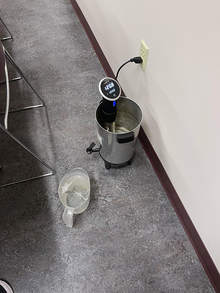Saving, storing and treating vegetable seeds
UNIVERSITY OF MINNESOTA EXTENSION - www.extension.umn.edu
When saving tomato seeds, look for unblemished fruits from healthy, disease-free plants.
The recent cool mornings are a reminder that the gardening season is coming to a close. While next spring can seem impossibly far away, if you are saving seeds, now is the time to start collecting.
What plants you take seeds from and how you save them will affect next year’s success.
Choosing which seeds to save
Some vegetables are self-pollinating, while others are not.
- Self-pollinating vegetables are more likely to produce what you expect, they include tomatoes, peppers, beans and peas.
- Cross-pollinating vegetables are more likely to cross with other varieties in your garden or your neighbors’ gardens, leaving you with a less predictable outcome.
- Vine crops have separate male and female flowers, which can cross-pollinate. Avoid saving these seeds if you have multiple different vine crops in your garden, as you can end up with a zucchini-pumpkin hybrid that doesn’t have the best qualities of either parent.
The variety of your plant also makes a difference in seed-saving success. If you planted an heirloom or open-pollinated variety, it is a good candidate for seed saving. If you planted a hybrid variety, saving seeds will result in plants that don’t necessarily have the good qualities of the parent.
It is also important to save seeds from healthy plants. Look for plants free of disease symptoms, and unblemished fruit or pods.
Storing seeds
Different vegetables have different periods when it is time to harvest seeds. For specifics, see Saving vegetable seeds.
In general, store your seeds in a cool, dry, dark environment over the winter, and try to use them again in the next couple of years. The longer seeds are stored, the less likely they are to germinate well.
Treating seeds
Sous vide is an advanced piece of equipment to treat seeds. It keeps water at a steady temperature.
If you’ve been disappointed by seedborne diseases when saving your own seeds, hot water seed treatment is one way you can reduce the chance that these diseases show up. This process needs to be performed very carefully, as it can kill seeds if directions aren’t followed to the letter.
Treating seeds is especially important to reduce the risk of transporting diseases via seed from garden to garden if you are sharing seeds with others or using seeds from a seed library.
We often get questions about when growers can hot water treat their seeds. Some people treat them right after harvesting them. Others prefer to do this in the winter when they have some downtime. And others prefer to do it right before planting in the spring.
This past winter, U of M Extension educators treated seeds at three different times to see if the time of treatment would impact germination. We also tested the treated seeds against an untreated control. While this was a small demonstration project, we did not see any consistent differences across treatments or controls. The takeaway: as long as you follow the instructions carefully, hot water treatment at any time should not impact germination.
The Ohio State University has good videos and fact sheets about how to hot water treat your seeds.


